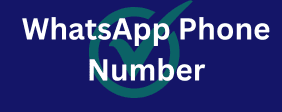LinkedIn stands as the undisputed champion for B2B lead generation, offering an unparalleled ecosystem for professional networking and targeted outreach. Unlike other social platforms, its inherent focus on careers, industries, and business relationships makes it fertile ground for identifying, connecting with, and nurturing qualified leads. Businesses leverage LinkedIn not just for brand awareness but as a direct channel for sales and business development, thanks to its rich professional data and advanced search capabilities. A successful LinkedIn lead generation strategy transcends simple profile email data creation; it demands strategic networking, consistent engagement, and intelligent use of the platform’s diverse features. The platform’s professional ethos means that conversations are often more direct, and users are generally more receptive to business-related propositions, provided they are relevant and add value.
Building Your Professional Network for Leads
The bedrock of effective LinkedIn lead generation is a robust and strategically built professional network. This isn’t about accumulating thousands of random connections; it’s about curating a network of individuals why rigorous evaluation is crucial for effective lead generation who align with your ideal customer profile. Start by connecting with industry peers, thought leaders, and, most importantly, decision-makers within your target companies. Personalize every connection request, mentioning a shared connection, a relevant piece of content, or a common interest. Once connected, actively engage with their content – like, comment, and share genuinely insightful thoughts. This visibility within their network can attract other potential leads to your profile. Furthermore, leverage the “People You May Know” feature and the “Connect with” suggestions on company pages to expand your network intelligently. Think of your network as a living, breathing database of potential opportunities that requires ongoing nurturing and expansion.
Optimizing Your Profile for Lead Attraction
Your LinkedIn profile isn’t just an online resume; it’s your digital storefront and a powerful lead magnet. It must be fax list optimized to instantly communicate your value proposition and expertise to potential clients. Start with a professional headshot and a compelling headline that goes beyond your job title, clearly stating how you help your clients. Your “About” section should read like a concise sales pitch, highlighting your accomplishments, niche expertise, and the problems you solve. Incorporate relevant keywords that your ideal clients might use to search for solutions you offer. Populate your “Experience” section with details that showcase results and impact. Crucially, gather recommendations and endorsements from satisfied clients and colleagues; these social proofs are incredibly influential in building trust with new prospects. A well-optimized profile doesn’t just attract views; it pre-qualifies leads by clearly setting expectations about your services.
Engaging with Prospects
Once connections are established, the true work of lead generation begins through consistent and valuable engagement. This involves more than just sending a sales pitch. Start by interacting with your prospects’ posts – share insightful comments that add value to the conversation, demonstrating your expertise and genuine interest. Don’t be afraid to share relevant articles or resources with them, tailored to their industry or recent activities. When you do initiate direct messages, ensure they are personalized and focused on starting a conversation, not just selling. Ask open-ended questions to understand their needs and pain points. LinkedIn Sales Navigator, with its advanced features like “Lead Builder” and real-time alerts, can supercharge this engagement process by providing deeper insights into prospect activity and enabling highly personalized outreach. Remember, the goal is to build a relationship before making a direct offer.
Utilizing LinkedIn Sales Navigator
For serious B2B lead generation, LinkedIn Sales Navigator is an indispensable tool that elevates your outreach beyond basic connections. Sales Navigator also allows for InMail credits, enabling you to message individuals outside your immediate network. Furthermore, its integration with CRM systems streamlines the lead management process, ensuring no potential lead falls through the cracks. It’s an investment that pays dividends by dramatically improving the quality and efficiency of your lead generation efforts.
Content Strategy for Lead Generation
A robust content strategy is the backbone of establishing thought leadership and attracting inbound leads on LinkedIn. Consistently sharing valuable and relevant content positions you as an expert in your field, making potential clients more likely to seek you out. This content can take many forms: original articles published directly on LinkedIn Pulse, well-curated industry news with your insights, whitepapers, case studies, or even short, engaging video snippets. Focus on content that addresses common pain points of your target audience, offers solutions, or provides unique industry perspectives. Encourage comments and discussions on your posts to foster a sense of community and interaction. The more valuable content you share, the more visible you become to your target audience, creating opportunities for them to engage with you and eventually convert into leads.
Leveraging LinkedIn Groups
LinkedIn Groups offer a powerful yet often underutilized avenue for highly targeted lead generation. These communities gather professionals around specific industries, interests, or challenges, providing a captive audience of pre-qualified individuals. Joining relevant groups allows you to listen to common pain points, offer genuine advice without direct selling, and establish your expertise. Actively participate in discussions, answer questions, and share valuable insights. This builds credibility and positions you as a helpful resource. While direct promotion is generally frowned upon, strategically sharing a relevant article or resource that subtly highlights your solutions can be very effective. Many groups also allow for direct messaging with members, opening up opportunities for personalized outreach once you’ve established a presence. By engaging thoughtfully in these niche communities, you can uncover hidden lead opportunities and build meaningful connections.
